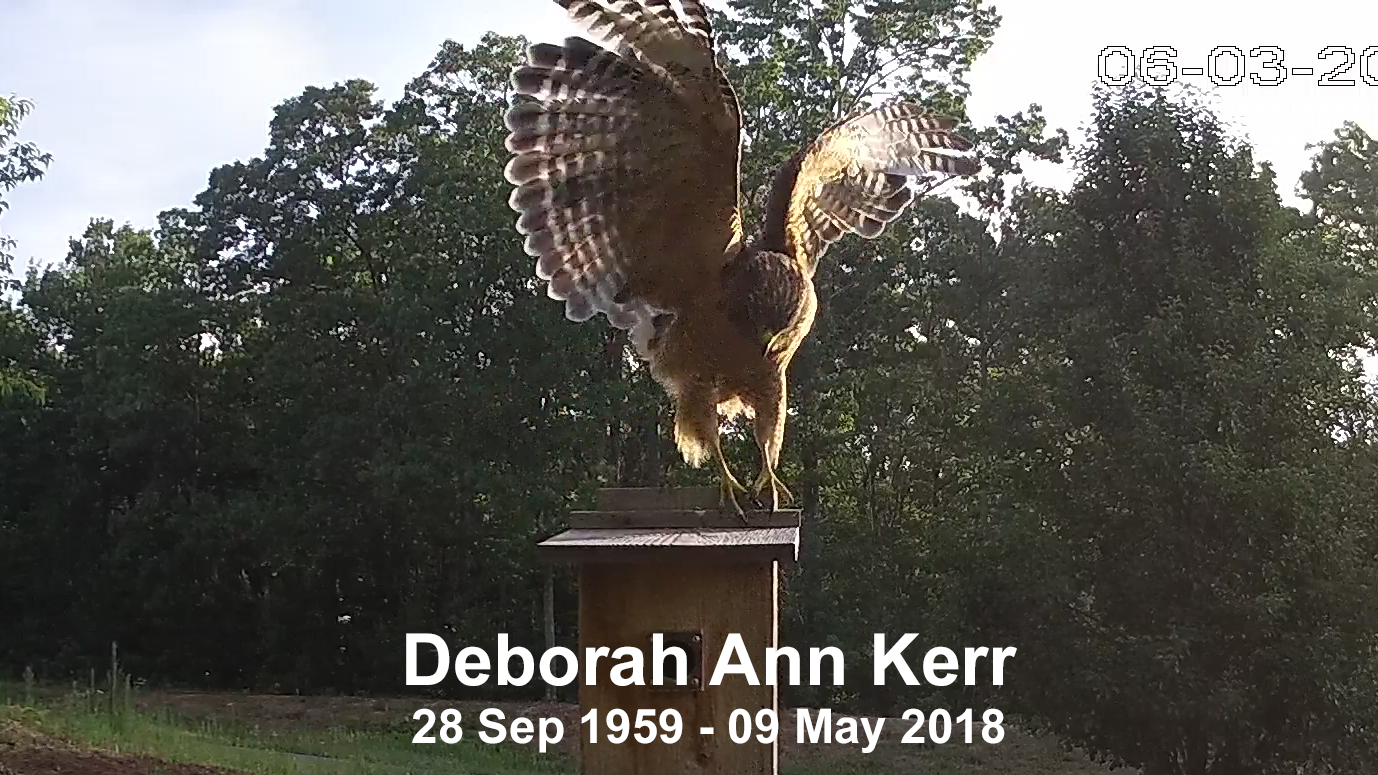There are multiple ways to know a hawk is in the area:
- You see a hawk (often perched close to your bird feeder/s).
- A group of Crows is carrying on and flying-at something in a fixed area.
- A Blue Jay is sounding the hawk alarm (or he's sounding a false alarm so he can have the feeder to himself).
- You have a number of bird feeders, and there's not a bird to be seen.
- Birds are on your feeders, but they are not moving -- at all.
The multi-view picture shown here is the simultaneous display from eight of my cameras. There's not one bird in sight. It's interesting how often this is the case immediately after I put fresh bird food out. Hawks are not dumb!
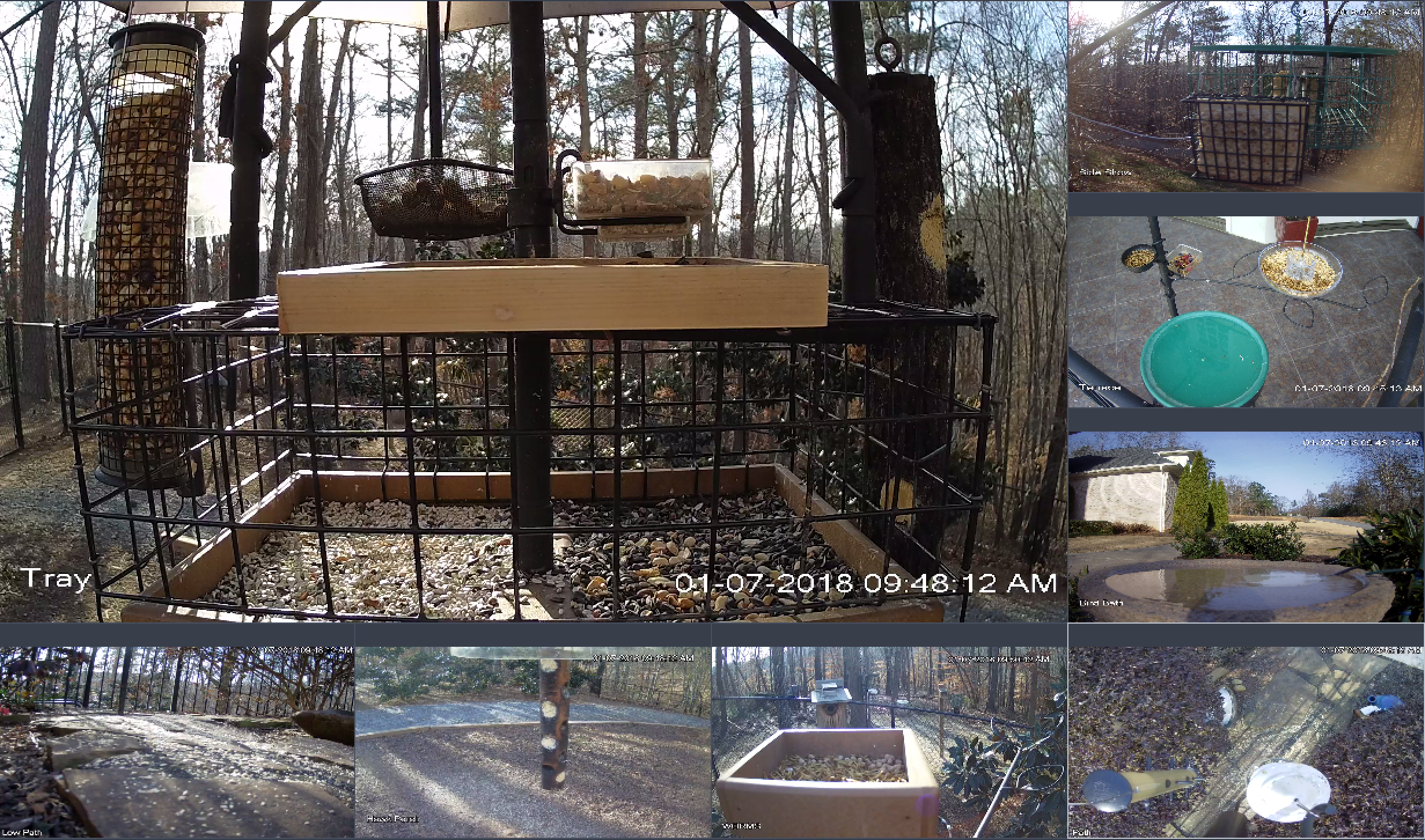
The two sets of camera snapshots below show the "freezing" behavior birds exhibit when a hawk threatens. The photo captions show the start and end time of this behavior. The second set of photos is particularly interesting, I think. For seven full minutes, a Titmouse perches motionless on top of the feeder -- and a Chipping Sparrow stands, with its head rotated 180 degrees, without so much as an eye-blink.
It's all about survival. Too bad the birds don't know a hawk can't get to them inside the "cage".
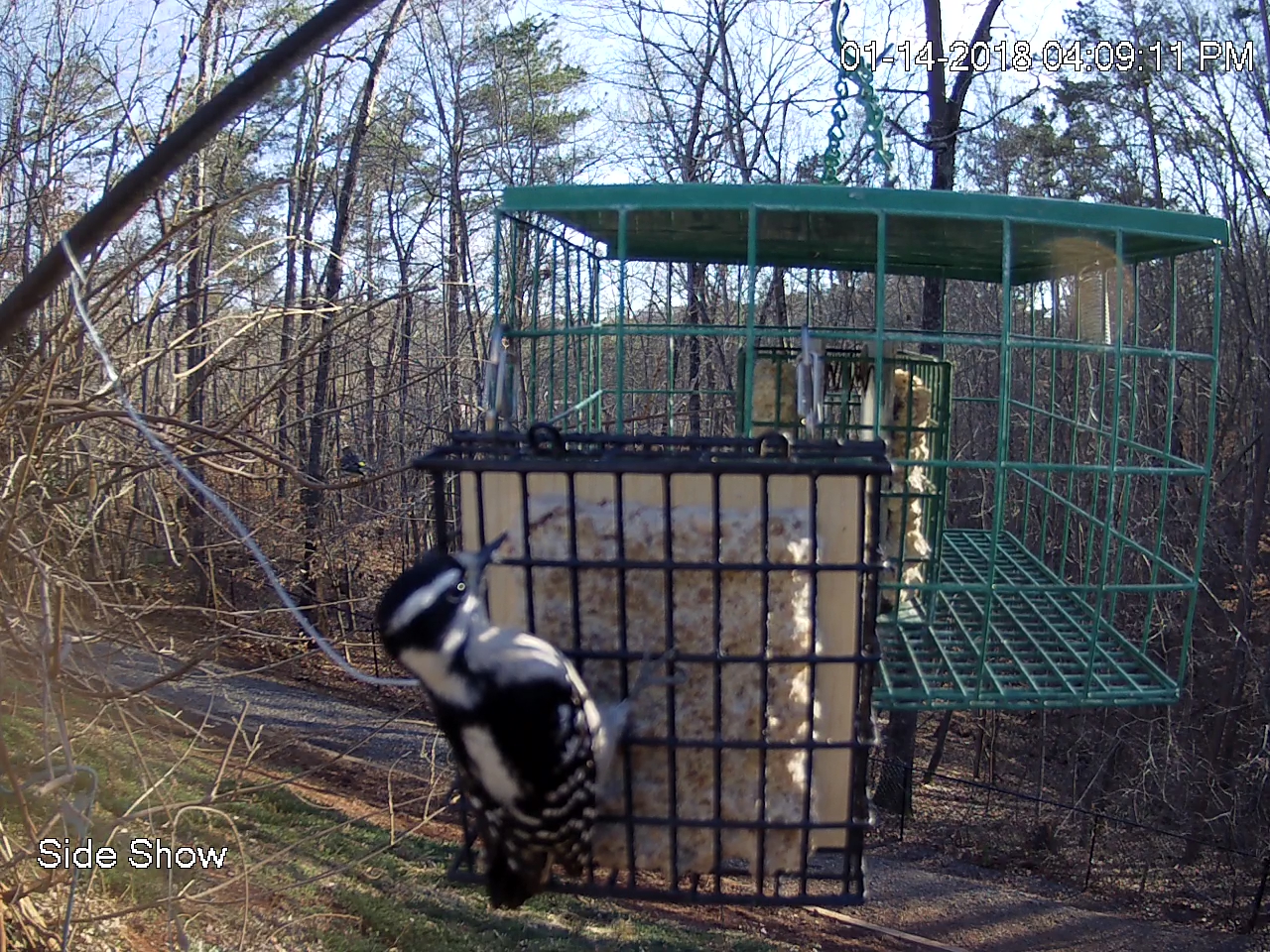
Downy at 4:09pm
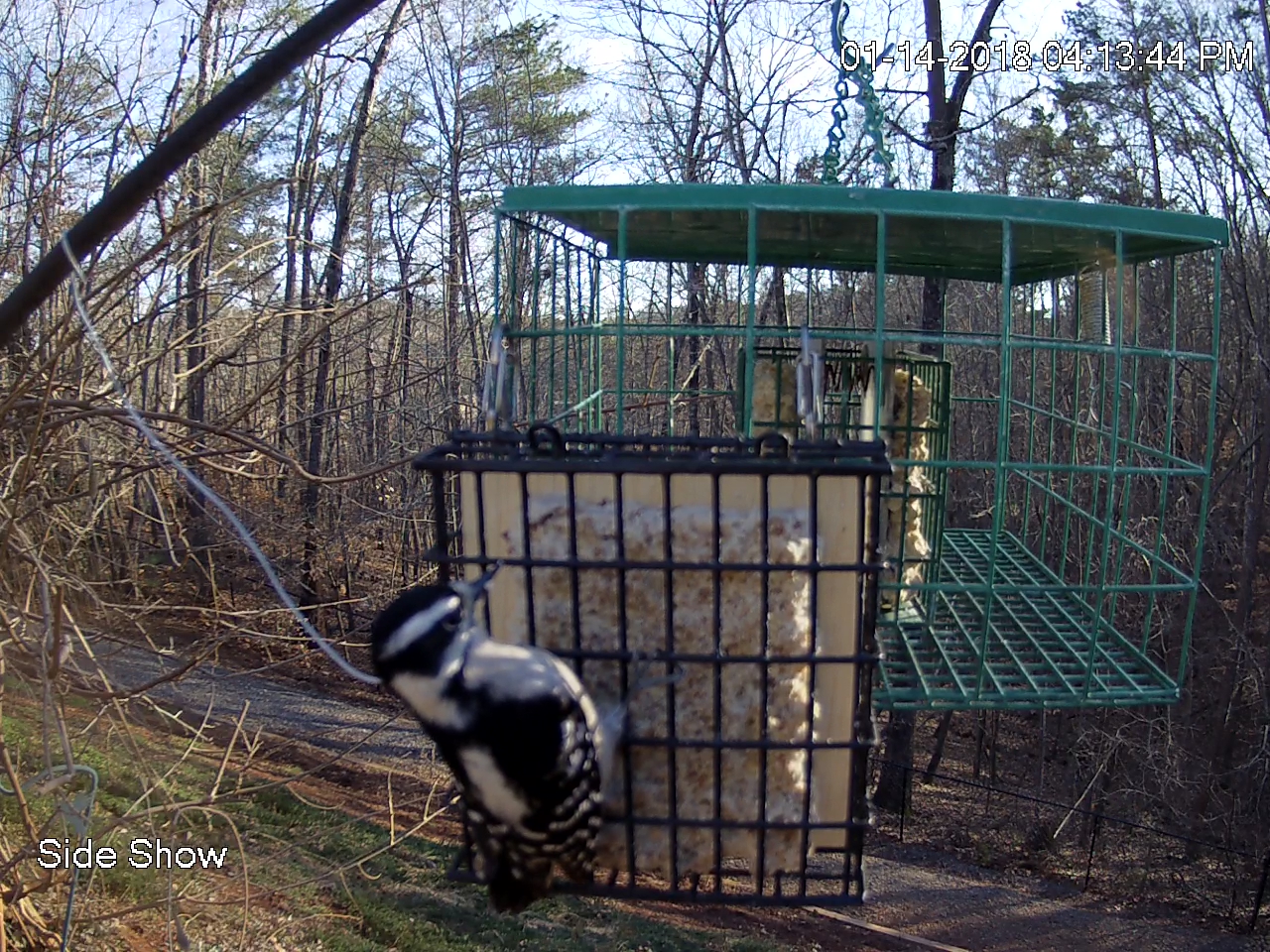
Downy at 4:13pm
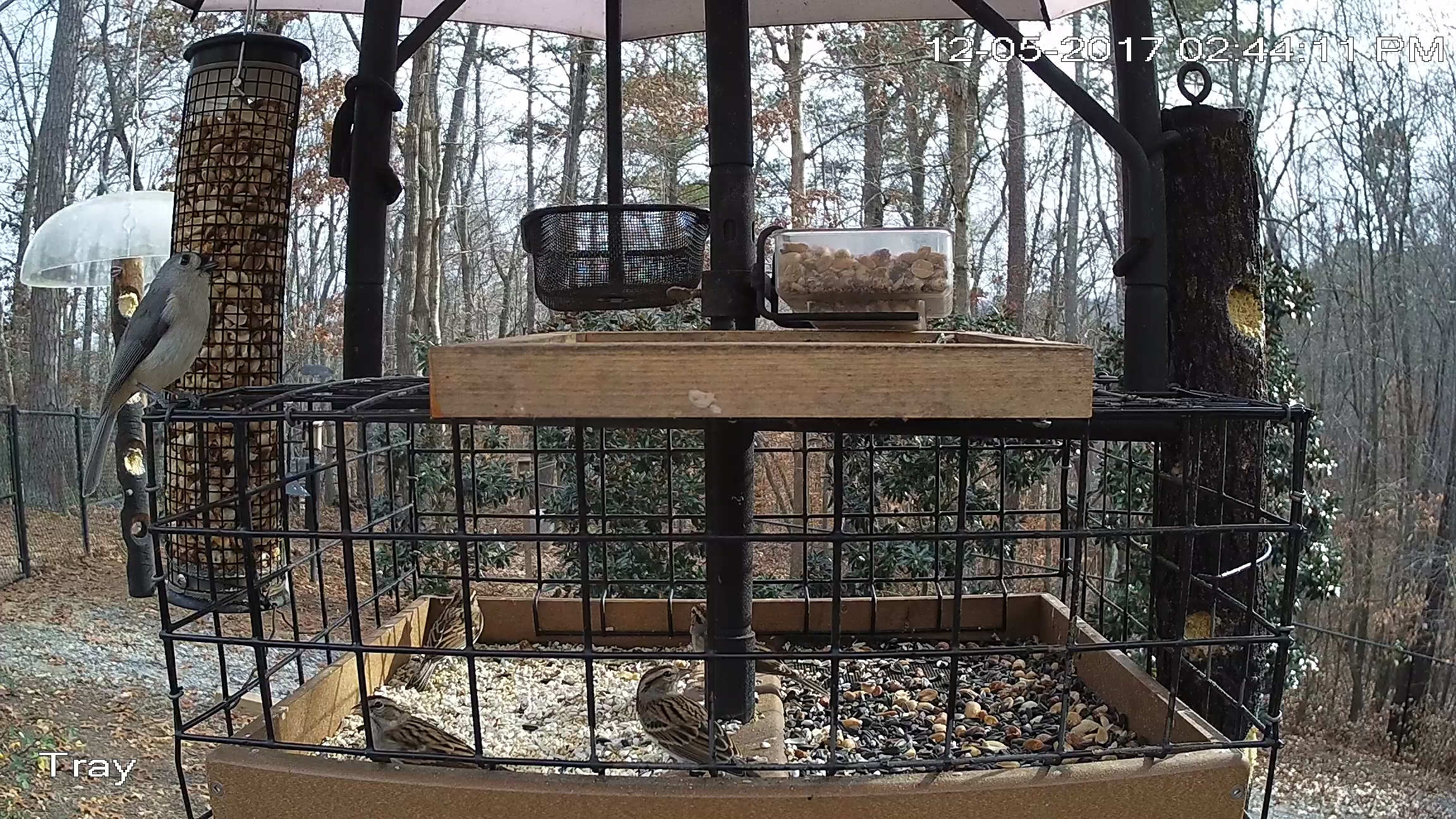
2:44pm
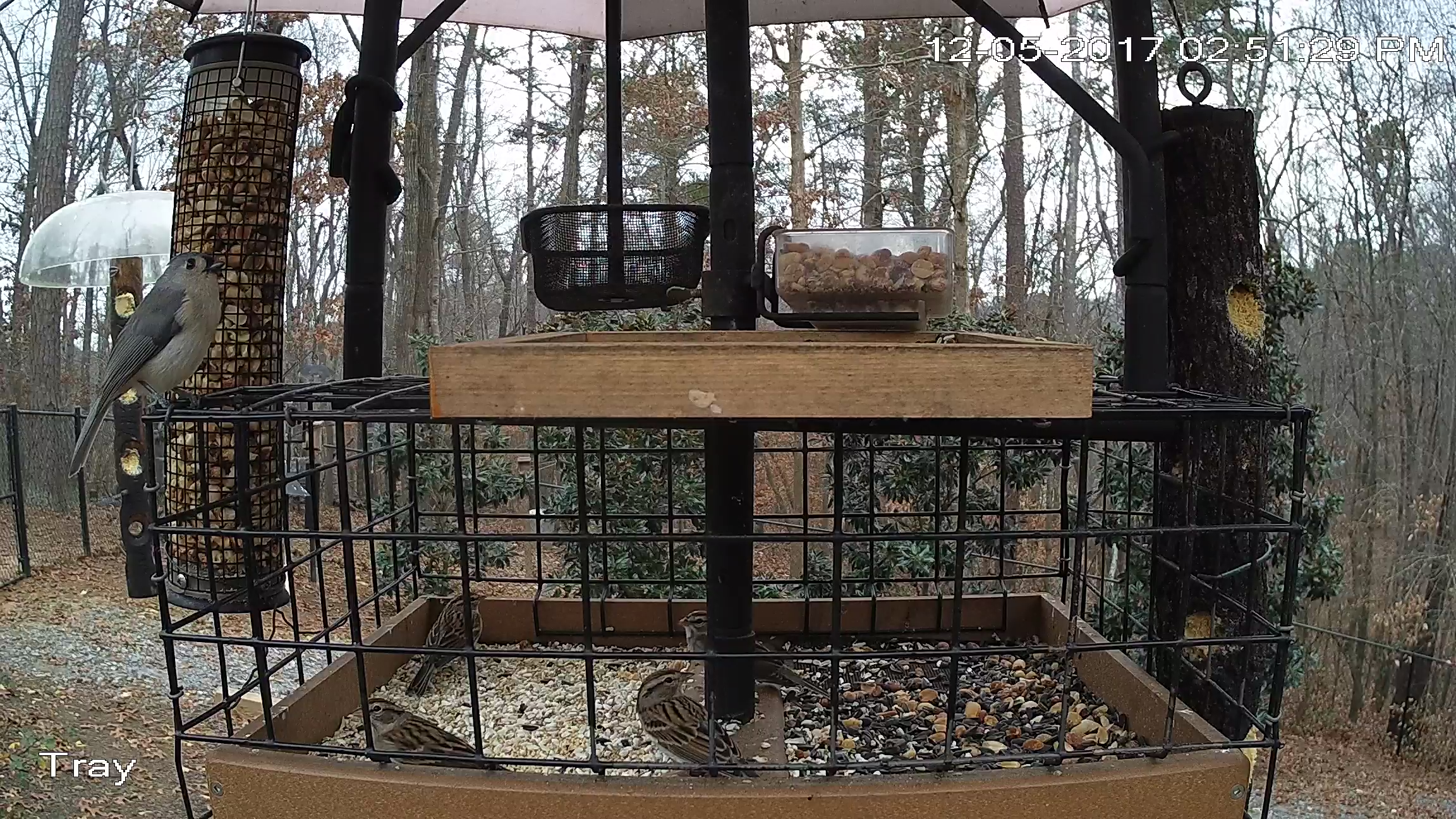
2:51pm
I learned virtually everything I know about hawks from my friend, Debbie. Well, with one exception. I have not learned to drive with my eyes fixed on the sky instead of the road, although decades of practice made Debbie an expert. It seems fitting to publish this post on the day of Deb's Memorial Service in Vermont. I will be there, along with all of her family and other friends, honoring the memory of a most-special person.
